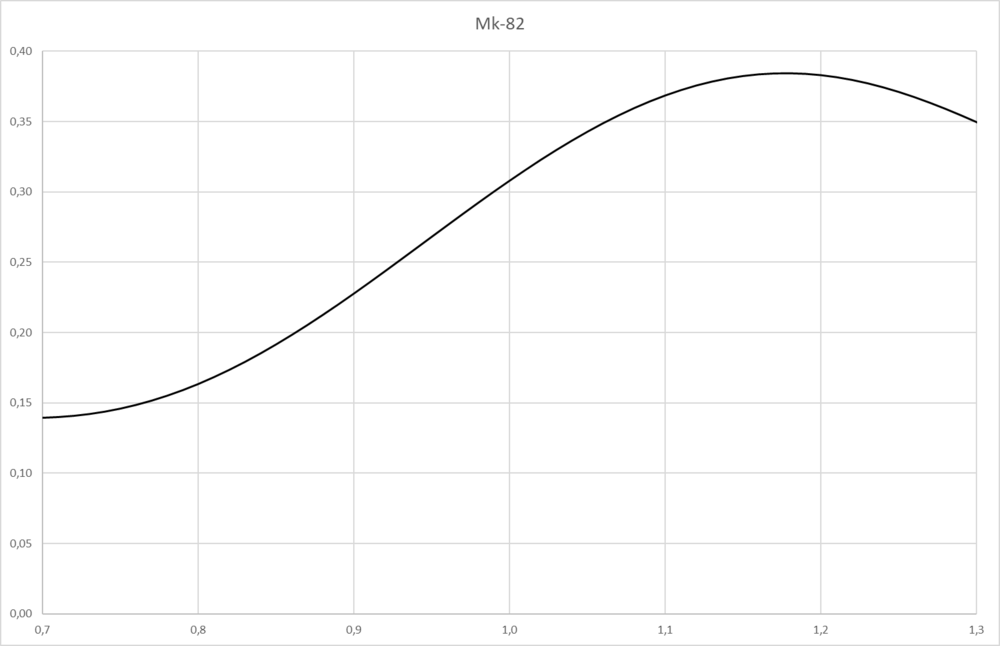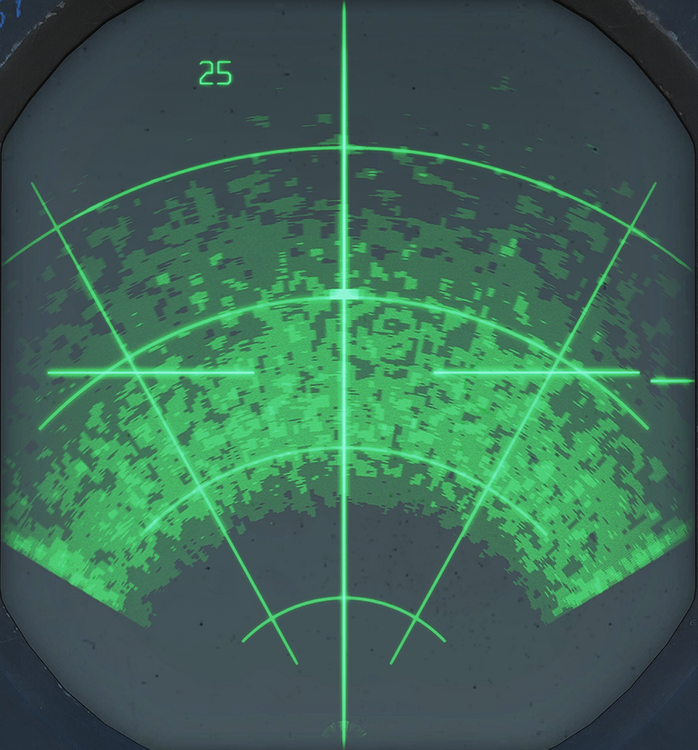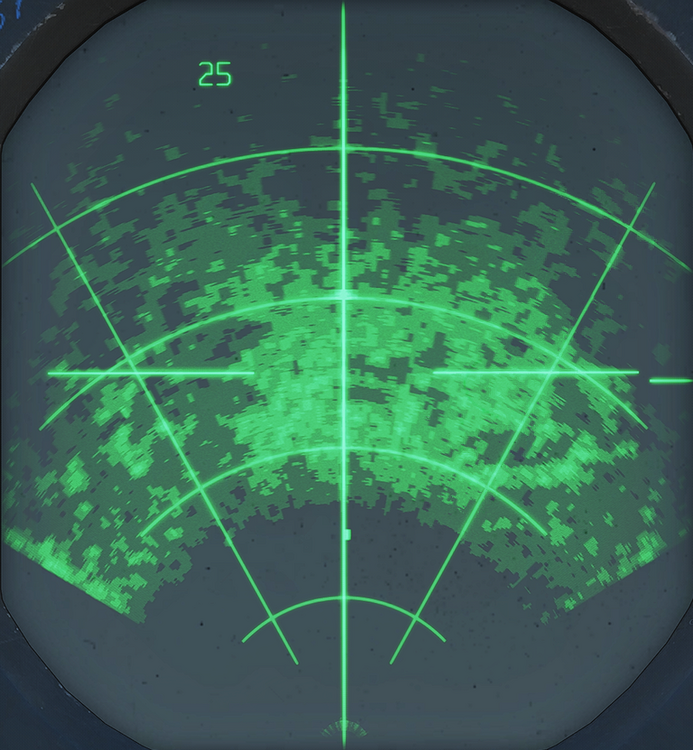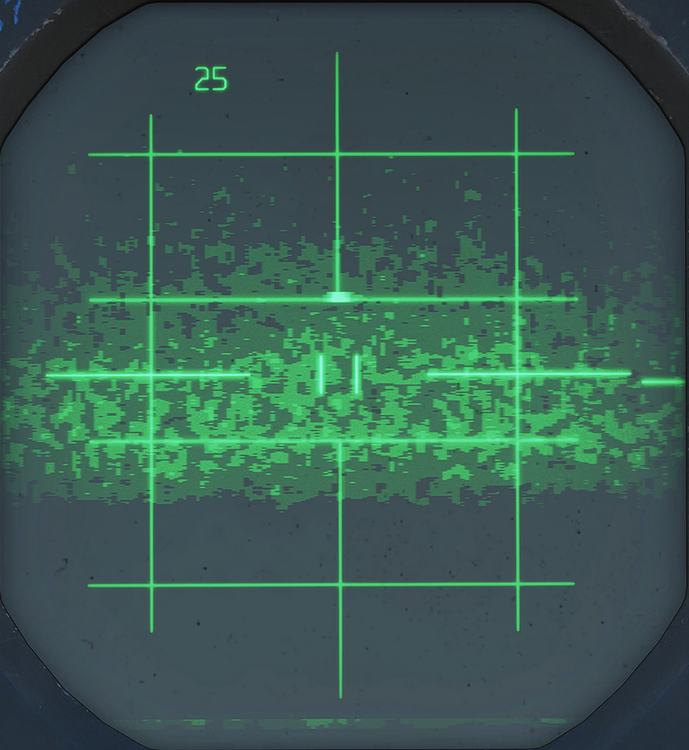-
Posts
266 -
Joined
-
Last visited
Content Type
Profiles
Forums
Events
Everything posted by Stickler
-
The attached track shows an AAR that starts with an empty centerline tank, relatively full internal wing tanks and all other fuel cells being almost completely full, with INT ONLY selected. Note how despite all internal tanks being completely filled both as per the EFB and as per the fuel indicator, no "transfer complete" call occurs and the tanker remains connected and continues to top off the internal tanks until I manually disconnect using the AAR disconnect button. This failure of automatic transfer completion does not occur either with external tanks connected and the switch being in ALL TANKS or without external tanks (in the latter case, transfer automatically completes regardless of whether ALL TANKS or INT ONLY is selected). aar_internal_only.trk
-
Not "my" bug, but track as requested. apnorth.trk
-
Stumbled upon this issue again recently when I noticed once more that, as discussed above, the 2x O/B MAU-12B/A, 2x I/B MAU-12B/A and 4x AERO-3B are part of the "Empty" loadout, which is why the "Weapons" have negative weight when the above items are removed. However, what I had previously not noticed is that in the Rearm & Refuel window, the presence or absence of the aforementioned stores has no effect on the aircraft's weight; in fact, their weight is included in the aircraft's loadout independently of whether they are attached to the jet or not. This means that the aircraft's gross weight inter alia for a super clean jet (no pylons, no external stores) is different in the mission editor and in the Rearm & Refuel window. Additionally, adding or removing the above pylons does not cause the aircraft's CG to shift (no "bump" when adding or removing them) and I could find no difference in aircraft drag even though especially the MAU pylons do have a small, but not totally insignificant drag index IRL. Getting back to, and expanding on, the question in the OP: Which aircraft weight is the one that is used for flight model purposes, the one in the ME or the one in the Rearm & Refuel window? Is my observation that the mentioned pylons do not have an effect on the drag index of the simulated F-4E correct?
-
As seen in the attached track, cells 5 and 6 currently do not feed into cells 1 and 2 after the internal wing tanks have gone through their first cycle of replenishing cell 3. This behaviour persists while the internal wing tanks are not empty and the internal wing transfer switch is in NORMAL. Cells 5 and 6 will feed if the internal wing transfer switch is in STOP TRANS. I first hinted at this behaviour in this post but I feel the issue is specific enough to warrant a separate report. The first of two specific pieces of evidence I found is this chart which is also contained (with fewer annotations) in all other RL flight manuals floating around: It essentially describes a marked forward CG shift after all external tanks have fed and are empty, which is presumably caused by cells 5 and 6 depleting faster than 3 and 4 since the internal wing tanks constantly replenish cell 3 (and thereby 4) but not 5 (and thereby 6). This behaviour is reflected in the below schematic as well, which indicates that cells 5 and 6 will be empty before cells 3 and 4. In the game, since cells 5 and 6 do not transfer until internal wing fuel is empty, cells 3 through 6 transfer simultaneously and at about the same rate afterwards and therefore run empty at approximately the same time, which decelerates the forward CG shift. I have not found any information in the RL manuals that would explain why cells 5 and 6 do not transfer while the internal wing tanks are feeding. transfer.trk
-

[2.9.21.16552] Active pause causes cell 1 fuel to drop to 850 lbs
Stickler replied to Stickler's topic in Bugs & Problems
Excellent! -
As per the attached track, using active pause causes the fuel in cell 1 to reduce spontaneously to 850 lbs and prevents cell 1 from being refilled from the remaining cells. This fuel jump is indicated on the fuel totalizer when holding the Feed Tank Check Switch, but not in the EFB. Once active pause is disengaged, cell 1 fuel content as indicated on the totalizer jumps back to 1416 lbs. If active pause is then again enabled, fuel in cell 1 reduces to 850 lbs once more, and so on. If active pause is kept enabled for too long, the aircraft will eventually flame out due to fuel starvation in cell 1 even though the EFB continues to indicate a full cell 1. cell1_active_pause.trk
-
According to the RL F-4E flight manual, the nose/tail arm switch closes a fuze select-ready relay in the BOMBS/station ARM light circuit. With the weapon selector in BOMBS, the station ARM light will not illuminate unless the nose/tail arm switch is energized. Conversely, the SAFE position of the switch does not inhibit the BOMBS release circuit. Bombs will release (SAFE) if all other release controls are energized and with only the station green light(s) ON. Therefore, the pilot will notice that with BOMBS selected and station green light(s) ON, an ARM-light-OFF indication does not necessarily mean that the bomb button circuit is in a SAFE condition. If the BOMBS position is used to bomb-off rocket or CBU dispensers in a jettison situation, then the nose/tail arm switch should be in one of the (ON) positions to get the proper station ARM light indications (MER/TER stations empty). As seen in the attached track, the position of the nose/tail arm switch currently has no effect on whether the ARM lights illuminate or not. nosetail.trk
-
- 1
-

-
According to the RL flight manual, when the compressor inlet temperature (T2) falls below +45°C, the maximum engine rpm is limited to prevent excessive mass airflow through the engine. The rpm maximum speed reduction starts at +45°C and is reduced until, at -54°C, the maximum rpm is approximately 90 percent. The engine also incorporates an exhaust gas temperature (T5) reset during military and full afterburner operation. This T5 reset occurs at the same point as T2 cutback, and reduces EGT at the same time that T2 cutback is reducing rpm. As can be seen in the attached track, even at a T2 of -40°C, maximum engine rpm remains 100% and I could find no evidence of T5 reset. I do not believe these effects are intended to be modelled (though I cannot be sure) so I'll leave this here as a low-priority feature to be implemented in the future. no_t2_cutback.trk
-
According to RL flight manual, a utility hydraulic system or double generator failure renders the variable bypass bellmouth and auxiliary air doors inoperative. Operation of an engine with an open variable bypass bellmouth and closed auxiliary air doors will allow engine compartment secondary air to recirculate to the engine inlet. During low altitude or ground operation, the temperature of the recirculating air may be high enough to initiate T2 reset. As seen in the attached track on the EFB engine page, switching off both generators after a hot spawn with the corresponding closure of the auxiliary air doors does not cause T2 to increase (T2 remained at OAT = 50°C for 3 minutes, I did not continue the test afterwards), and therefore T2 reset does not occur. Even though the game manual does not mention T2 reset/auto-acceleration as a possible malfunction, I was expecting auto-acceleration due to malfunctioning auxiliary air doors to be implemented since T2 reset due to high-speed flight seems to be accurately modelled. If auto-acceleration is intended to be modelled I recommend to check for a bug here; if it is not intended to be modelled, consideration should be given to model the effect as a low-priority item. no_auto_acceleration.trk
-
The question of whether the F-4E is supposed to feature G-breath audio was asked several times on Heatblur's Discord (most recently here), but never received a definitive response. Thus, is there supposed to be G-breath audio? If so, it currently does not work (I cannot recall if it ever did).
-
According to the game manual, the VOR lamp illuminates to indicate that the VOR system is ready and receiving. That is, a valid VOR frequency has been selected, a signal is received and the navigation knobs have been turned to VOR navigation. Conversely, the tooltip when pointing at the VOR lamp indicates that it has "no function". As seen in the attached track, even if the above prerequisites are met and good reception of the VOR frequency is confirmed on the HSI, the VOR lamp does not illuminate. I recommend to either implement VOR lamp illumination (my preference), or change the manual to read that VOR lamp illumination is not implemented. vor.trk
-

[2.9.21.16552] Battery seems to have unlimited capacity
Stickler replied to Stickler's topic in Bugs & Problems
Attached as requested. battery.trk -
Consider the attached track. Starting at 40000 ft MSL above sea-level terrain, I command Jester to scan the 0-10k block, resulting in an initial scan elevation of approximately -11°. I then disable Jester. Note how during the subsequent descent to 5000 ft MSL, Jester, despite being disabled, adjusts radar scan elevation to continue focusing on that altitude band, reaching 0° elevation precisely when the aircraft levels off at 5000 ft. While I think Jester should exhibit this behaviour when enabled, I do not think he should auto-adjust radar scan elevation when disabled. rdr_adjust_no_jester.trk
-
When sitting on the ground with only the engine master switches ON, according to the EFB, one can cause an electrical demand of 355 Watt with all consumers connected to battery and essential DC buses switched on. A 24 volt, 11 ampere hour battery should take around 44.6 minutes to fully discharge when supplying this demand. I just spent about 80 minutes on the tarmac in that condition using time acceleration and the battery was still not empty. Is battery depletion modelled?
-
According to all RL manuals available, the DC BUS caution light will illuminate when the main DC bus and the essential DC bus are disconnected, and specifically in case of a double generator failure. While I have not been able to deliberately cause a disconnect of the main DC bus and the essential DC bus that does not involve unpowering the essential DC bus completely, and there is currently no way to induce a double generator failure via the failures menu, my assumption is that switching OFF the generators after a ground start or while airborne is likely to be equivalent to a double generator failure. In that case, the DC BUS light currently does NOT illuminate; in fact, I have never seen that light illuminate at all unless during a lights test. Considering that in case of double generator failure in the air, all buses except the battery and the essential DC bus are unpowered, the DC BUS must be powered by either of these buses, otherwise it would not illuminate as per the manual. Since the EJECT light is powered by the battery bus, I assume the fire and overheat warning lights and the DC BUS light should be as well. I recommend the DC BUS light be checked for proper functioning.
-
With the help of the awesome EFB, I have been able to get close to what the underlying issue is: The battery, despite being a 24V battery, powers the battery bus, essential and main DC buses to 26 V, and voltage does not drop as the battery depletes since battery depletion does not currently seem to be modelled (see the in-game manual and this report). When disconnecting external power with the generators set to EXT ON, the voltage on the combined buses therefore never drops below 24.5 + 0,5 - 0 V, and the DC bus tie never opens UNLESS you use the battery bypass switch to force a disconnect, in which case the speed brakes and the auxiliary air doors retract as expected. It is noteworthy that when using the bypass switch that way and then switching it OFF again, the essential and main DC buses do NOT reconnect despite the essential DC bus reaching 25.5 +/- 0.5 V, even after the generator switches are simultaneously recycled. Conversely, when reconnecting external power, the DC bus tie closes WITHOUT having to do the simultaneous recycling. I would expect the DC bus light to come on instead in that case until recycling is accomplished (compare this report). Now, I have no idea to what voltage the battery powered the buses in the RL F-4E. As posted above, I suppose the voltage was probably less than 24.5 + 0,5 - 0 V since: If either the speed brakes or the auxiliary air doors were able to operate on battery power without external (or internal generator) power, there would be no need for the -1 warning. The operative equipment chart with battery power seems to include all equipment tied to the essential 28V DC bus, but none of the equipment tied to the main 28V DC bus, which likely indicates that the latter bus could not be powered from the battery. The manual only speaks of the battery powering the essential dc bus "for a period of time", not the main 28 V dc bus. As per the manual, "the dc tie control circuit is designed to disconnect the two dc buses during double generator failure so that loads from the main 28 volt dc bus will not discharge the battery". It is not immediately apparent from the electrical charts in the flight manual why manually disconnecting the generators from the bus system via the generator switches would cause the DC bus tie to open whereas removing electrical power by disconnecting the GPU would not. Specifically, there is no indication that the generator switches controlled the DC bus tie directly.
-

[2.9.17.11733] 68-494 or 68-495 fuel system?
Stickler replied to Stickler's topic in Bugs & Problems
First of all, I really appreciate the new EFB feature. Good job! With regard to the original questions: The fuel quantities in the cells as per the EFB strongly point to a 68-495 fuel system, albeit without the tank depressurization switch. Open. Very low priority in my opinion. I was not able to attain the aircraft state depicted in the manual showing the wings as well as cells 5 and 6 empty but the remaining cells essentially full. I do not have access to sufficient RL material to determine whether this indicates a problem with the manual or the fuel system modelling. With regard to the additional question brought up, I could find no evidence that the fuel state as per the EFB or the fuel state indicated on the fuel totalizer is influenced by external temperature or air pressure in the game. -
The cx function seems to be described in the respective weapon.lua at dcs-lua-datamine/_G/weapons_table/weapons/bombs at master · Quaggles/dcs-lua-datamine · GitHub, for example for the Mk-82 it's cx_coeff = { 1, 0.29, 0.71, 0.14, 1.28 }. I am almost certain one could reconstruct the actual formula used based on these coefficients, but I am too bad at math to do so or to even know for sure it would be possible. I do know how to datamine so I went the inductive route. Let me know if you figure out a deductive one.
-

[2.9.20.15384] Question about radar theory/implementation
Stickler replied to Stickler's topic in DCS: F-4E Phantom
OK, thanks, sounds reasonable. Without access to the full radar specs it is likely impossible to determine if increased radar reflectivity due to antenna elevation/focus and increased attenuation due to greater distances from the emitter factor into each other "correctly". More so due to DCS engine limitations. -

[2.9.21.16362] Question about specific air refueling behaviour
Stickler replied to Stickler's topic in DCS: F-4E Phantom
Thanks Zabuzard, that was helpful. -
They depend on the weapon. For the Mk-82, for example, you can obtain charts like the below (x-axis: Mach, y-axis: cx) from having the AI mass drop the weapons and determining/calculating cx for different Mach numbers from Tacview telemetry.
-
Compare the attached tracks. Both show me in an identical aircraft (airspawn with empty centerline tank) during AAR. Scenario 1 (AAR_EFB_wings): Spawn fuel 3725 lbs. The centerline tank starts filling up immediately upon contact. The internal wing tanks start filling up only once fuselage cells 1, 2 and 7 are full. Scenario 2 (AAR_EFB_wings_centerline): Spawn fuel 6155 lbs. Both the internal wing tanks and the centerline tank start filling up immediately after contact even though cell 7 is empty/still in the process of being topped off. Why is cell 7 being full an apparent prerequisite for the internal wing tanks starting to fill up in scenario 1, but not in scenario 2? AAR_EFB_wings.trk AAR_EFB_wings_centerline.trk
-

[2.9.20.15384] Question about radar theory/implementation
Stickler replied to Stickler's topic in DCS: F-4E Phantom
Thanks for the tip, however, MAP-PPI exhibits the same behaviour: For completeness' sake, I included MAP-PPI with circular polarization, but the issue is the same. Plus, MAP only has linear polarization IRL, so the picture should not change (I reported this as a bug separately): Before somebody asks: RDR 1-bar also apparently focuses its radar energy as seen above. -
The attached track shows my aircraft at exactly 15 nm plan range from a discrete ground target and 3815 ft above it. The background terrain is completely flat and uniform (southernmost edge of Caucasus, over Türkiye). From trigonometry we obtain that the target is 2.4° below the horizon. 2.4° happens to be the radar depression below the horizon obtained when asking Jester to scan 7500 ft below the aircraft at 30 nm, which I command him to do. The target should therefore be in the center of the MAP 1-bar radar beam. Looking at the track and the below screenshot which shows the radar picture immediately before exiting the aircraft, we can see that from visual interpretation of the radar, the reflected radar energy seems to be highest at around 11 nm slant range from the aircraft, and not at 15 nm, as I expected. How can this be explained? null mbc.trk









